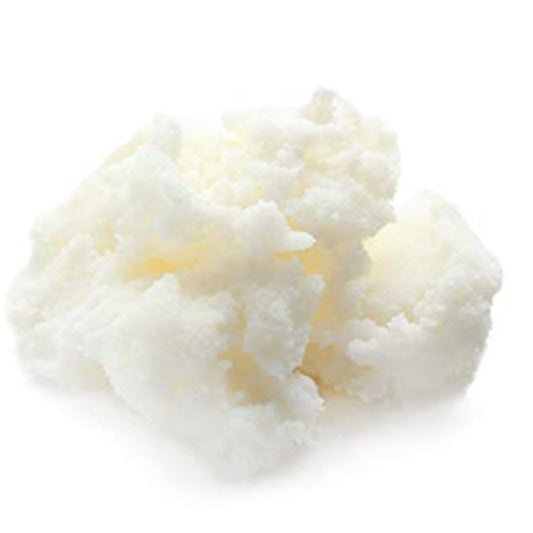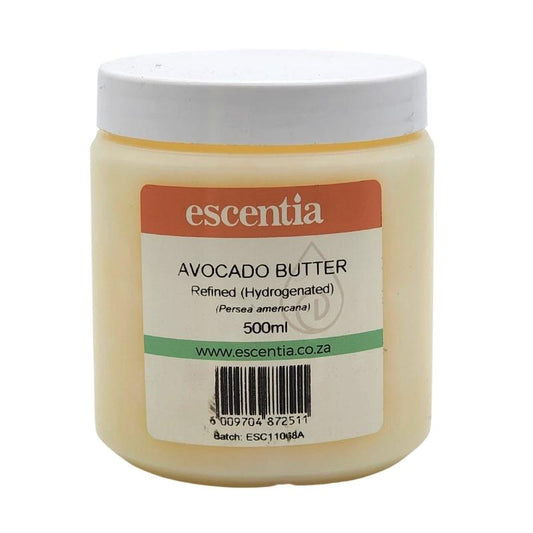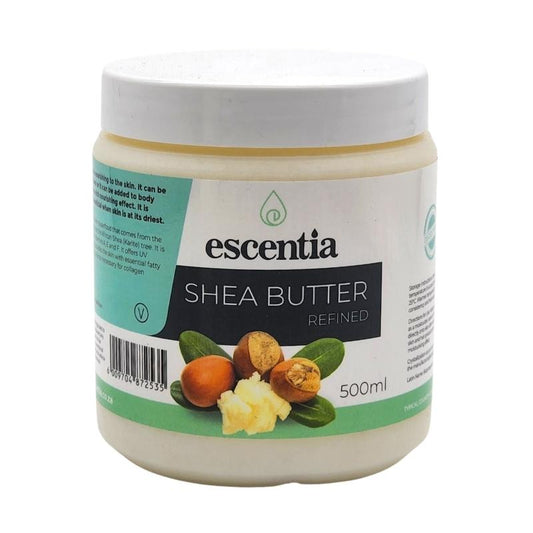
Working With Mango Butter
Juliette van der MeerMango butter is a beautiful soft cosmetic butter that has a non greasy, satiny skin feel and quick absorption rate. It is similar in texture to shea butter, but without the greasiness that shea butter imparts.
Mango butter can soothe, moisturise and protect skin and hair, and because of its fast absorption rate and matte feel, it's the perfect butter for summer!
So without further ado,let's dive in to how you can work with it:
Does Mango Butter have a scent?
No, unfortunately mango butter does not smell like the mango fruit, sorry! It has a neutral scent.
Solubility
Mango butter is a butter/fat and is therefore oil soluble.
If you want to combine it with water or water based ingredients and actives, you will require an emulsifier to mix them together, as oils and water don't mix without some help.
Usage Rate
Mango butter can be used just on its own, so up to 100% usage rate, but most of the time you will be mixing it in with other ingredients to make balms, butters and moisturisers.
The usage rates of butters in these products varies wildly, anywhere from 3% to 50%. It is dependent on the formula and other ingredients.
Mango Butter Plays Well With
Mango butter is a 'solid oil' so it works well with all other kinds of oils and butters. Try making butter blends with mango butter and a few other kinds of butters.
- Mango butter pairs well with Vitamin E oil and lecithin.
- When combined with an emulsifier, you can make beautiful creams with it.
How To Work With Mango Butter
Like any butter, in most cases you will need to melt the mango butter down to work with it. Heat it until liquified, then mix in other oils if desired, allow to cool, and then whip it for a smooth and fluffy appearance. Or you can add mango butter to the heated oil phase in formulations, along with the emulsifier, oils, butters and fatty acids/thickeners.
Tip: If you're finding your products containing shea butter are a bit greasy, try replacing the shea butter with mango butter instead. It should reduce the greasiness.
What Kind Of Products Use Mango Butter
Body butters, balms, lip balms, moisturisers and hair products: mango butter is great in everything where a butter is applicable.
It is particularly good in products where you want all the moisturising benefits of a butter but not too much greasiness - this makes it our first choice when it comes to body butters!
Formulations With Mango Butter
Mango butter has a lovely soft texture, and along with its velvety dry skin feel, it actually makes a fabulously easy body butter and lip balm just on its own. Scoop mango butter out the bucket and spread into tins, and you have the easiest body product ever!
But it's pretty fun combining more than one ingredient, so let's try some different formulas.
Mango Lip Butter
Matte feel, but very moisturising.
Ingredients:
- 0.5% lecithin
- 5% beeswax
- 94.5% mango butter
Method:
- Weigh out all the ingredients into a beaker and melt through.
- Give it a stir to combine everything.
- Pour into a little lip balm tin or container and allow to set.
Idea: add some mica for shimmer if you like! Stir it in while the mixture hasn't fully set yet.
Salicylic Acid Balm
Salicylic acid is a beta hydroxy acid, and is great for unclogging pores, clearing out acne, and treating chicken skin (keratosis pilaris). 2% salicylic acid is the highest you should go, so do not increase the amount.
Ingredients:
- 2% salicylic acid
- 0.5% lecithin
- 97.5% mango butter
Method:
- Weigh out and add all the ingredients to a beaker and heat to melt together. You will need to heat to around 80 degrees.
- Stir constantly while it cools down to ensure the salicylic acid dissolves fully.
- Decant into a tin or jar and apply topically or all over.
As this is a leave on product, it will have time to work on your skin. I like to apply at night and then wash and moisturise my skin in the morning.
Always do a patch test first and do not use if you are sensitive to salicylic acid.


























